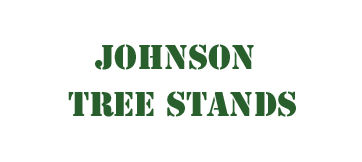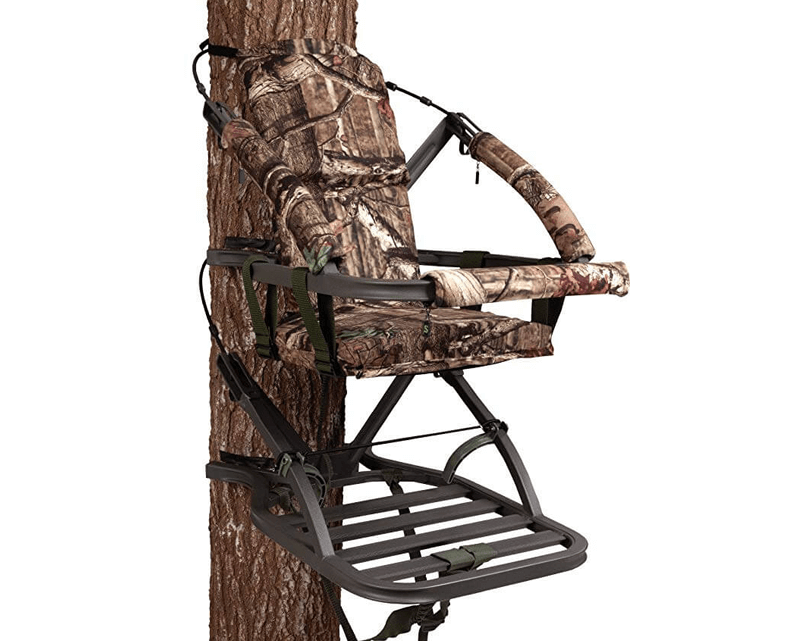
The tree stand may come in several kinds or configurations depending on the hunting circumstances and place. Choose the sort that best fits your objective or need. You can read our purchasing manual after choosing the sort to define the best tree stand for your requirements.
There are two parts of a climbing stand or climber, the seat and the footrest. At floor level, the stand is connected to the tree and is then used by shifting one segment and maintaining your weight on the other section to inch or worm the tree up. One of the most comfortable tree stands on the market is the fulcrum-type configuration, which also provides simple installation.
On a tree that is too small or too large, has low hanging branches or has no straight trunk to support the tree stand, you can’t set it up. This form is ideal for the physically fit hunter as it can be taken to the site and set up right there on the hunting day itself. Eliminating the need for any extra equipment, the climber provides effortless portability.
A lock-on or fixed tree stand is lightweight, comparatively simple to assemble and fast to attach to a broad variety of trees. For problem-free portability, many designs come with backpack-type straps. Most of them are really fundamental or barebone structures with tiny seats and little to no padding, with only a large enough platform to rest on the feet.
This form is left for all-day use in a continuous situation. It doesn’t have the ability to climb so you may need to have a ladder, climbing sticks or tree steps to get the device to your required height or get it from the floor. A few days before hunting day and at daylight, the fixed tree stand must be put up.
For the most portion, a ladder stand is a ladder attached to trees. The upstairs platform offers space for standing and shooting. Some designs are shipping with a seat already, while others require a distinct buy. For more than one hunter, there are plenty of ladder stands so you can bring along a hunting buddy, a baby or a videographer.
The setup of this tree stand is quite heavy and will involve setting up between two to three individuals. Typically for the whole hunting season, a ladder stand is left in place. If the main factors are comfort, stability and safety, a ladder stand is best.
The tripod or tower is the fourth type of tree stand. It is uniquely designed to sit on three or four supporting legs, with a padded seat and platform and perhaps some form of enclosure in some models. On a generally rotating platform that swivels 360 degrees, you can get an all-around perspective of the hunting ground.
Safety
A damaged or poorly built tree stand could easily fail under load, so it’s important to make sure it has a solid construction and you won’t slide off the steps or lose your footing while climbing. Fortunately, a tree stand could improve your hunting experience with a set of appropriate safety gear, adequate maintenance, and use as well as cautious tree stand usage practices.
Tree Stand Accessories You can cramp up the room with all types of hunting equipment on the tree stand with you. To create most of the tree stand, you may need to invest in some extra accessories. Some of these extras include racks, a hang-it – all belt, or a rifle and bow holder that you simply secure to the stand itself or the tree so that you can easily access it and have enough room for everyone.
Sometimes you may need to get more than one tree stand to accommodate various configurations and apps. The most important thing is that each of the units you get provides sufficient assistance, security, and stability to readily manage these differences and maximize every hunting journey you make in the wild.




